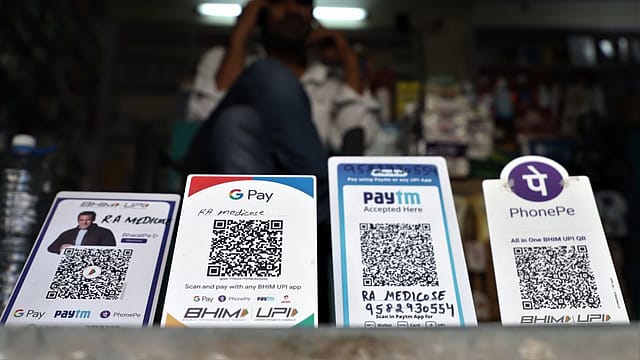NPCI increases transaction limit to ₹5 lakh for specific merchants, new rules to apply from September 15
ADVERTISEMENT

The National Payments Corporation of India (NPCI) has announced a revision of UPI transaction limits for verified merchants across 12 identified categories, effective September 15, 2025.
“Member, Apps and PSPs take note of the above enhancement, undertake requisite changes and ensure the compliance with the same by 15th September 2025,” the circular stated.
These categories include capital markets, insurance, government e-Marketplace (EMD payments), credit card bill payments, collections, business/merchant transactions (including pre-approved payments), jewellery, FX-Retail via the BBPS platform, and digital account opening for term deposits and initial funding.
Simply put, verified merchants will now be able to make a higher value of transactions for these specified categories using UPI. For instance, tax payments, capital markets, and insurance transactions can now go up to ₹5 lakh per transaction, with a daily cumulative limit of ₹10 lakh.
Similarly, for credit card payments, the limit has been raised to ₹5 lakh per transaction and ₹6 lakh per day.
Collections such as loan repayments, B2B payments, and EMIs will allow ₹5 lakh per transaction with a ₹10 lakh daily cap.
Similarly, government e-Marketplace transactions will permit ₹5 lakh per transaction and ₹10 lakh per day.
December 2025
The annual Fortune 500 India list, the definitive compendium of corporate performance, is out. This year, the cumulative revenue of the Fortune 500 India companies has breached $2 trillion for the first time. Plus, find out which are the Best B-schools in India.
Other categories will also see a change in their limits, with FX-Retail via BBPS (thatis forex dealing via the Bharat Bill Payment System (BBPS) (now called Bharat Connect)) is capped at ₹5 lakh per transaction and daily, while term deposits via digital accounts are allowed up to ₹5 lakh per transaction and daily.
However, these enhanced limits are only applicable on P2M (Person-to-Merchant) transactions with merchants including security brokers, dealers, insurance service providers, travel agencies, and tour operators.
Meanwhile, the limit for P2P (Person-to-Person) transactions has not changed and continues at ₹1 lakh daily.
Under the revised limits, NPCI has also allowed banks to impose stricter internal caps.
Why is this important and how does it impact you?
This decision to enhance per transaction limits for UPI comes at a time when UPI transactions have seen a huge uptick in daily volumes. This reflects the growing role of UPI in India’s financial ecosystem.
UPI has already established itself as the country’s most preferred digital payments system, processing billions of transactions each month. On September 3 alone, BHIM-UPI handled 669.81 million transactions worth ₹95,950 crore, alongside a larger 1,993.53 million transactions valued at over ₹3,00,495 crore, underscoring its massive adoption and scale.
The move to enhance limits is aimed at facilitating high-value transactions and strengthening UPI’s utility beyond small-ticket payments. Further, this means that whenever you engage with these merchants, you can now carry out higher-ticket transactions via UPI, up to the revised caps, offering you convenience and faster settlements.
